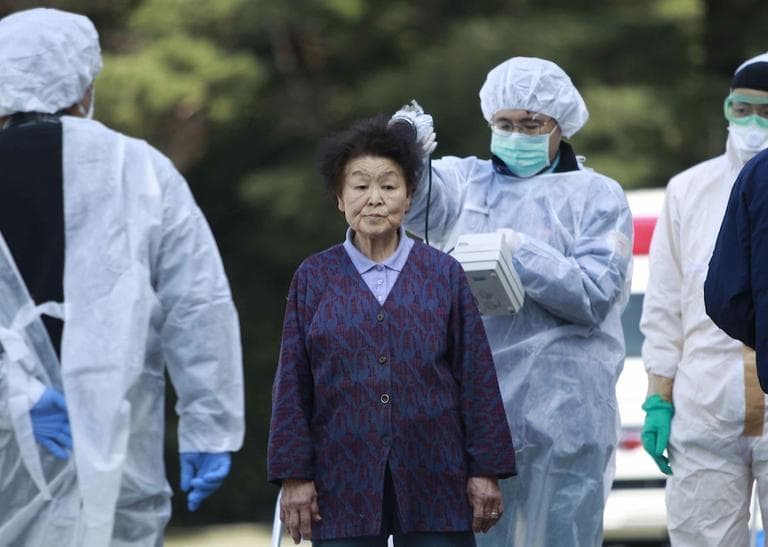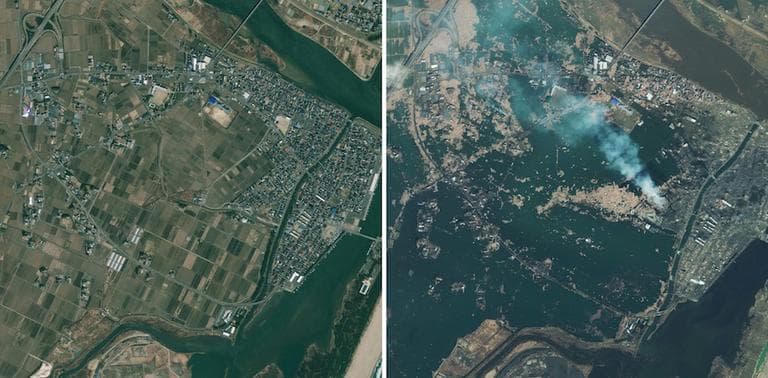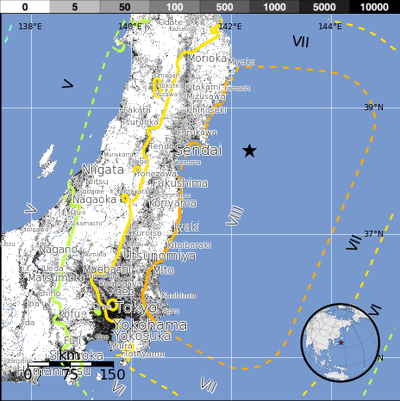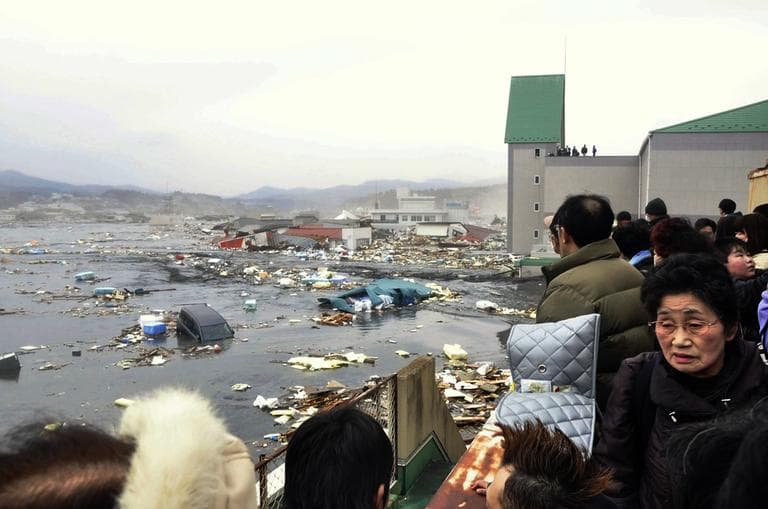Advertisement
Japan's Quake And Nuclear Risks
ResumeJapan’s monster quake and nuclear concerns. We discuss the damage and lessons.
Jane Clayson in for Tom Ashbrook

Japan builds for natural disasters and it has built its national character on taking disaster in stride, pulling together, and building over.
But on Friday came that super-sized quake, not to mention aftershocks that would have flattened most countries, to the tsunami, and now, a runaway nuclear crisis.
Another reactor exploded this morning, frantic efforts to keep the nuclear fuel from melting down.
They haven’t even had a chance to count the dead or start the great rebuild and this story is still not over.
This hour, On Point: The Japanese people and their indescribable challenge.
- Jane ClaysonGuests:
Jim Walsh, expert in international security and a Research Associate at the Massachusetts Institute of Technology’s Security Studies Program.David Sanger, chief Washington correspondent for the New York Times.
Coco Masters, former Tokyo correspondent for Time Magazine.
Costas Synolakis, professor of geophysics and the Director of the Tsunami Research Center at the University of Southern California.
Alex Marion, vice president for nuclear operations at the Nuclear Energy Institute.
More:

More photos from Japan here and here
Earthquakes in Context:
Japan, 3/11/11: death toll unfolding, 8.9 Magnitude
Tangshan, China, 7/27/76: Est. 655,000 deaths, 7.5 Magnitude
Sumatra, 12/26/04: 227,898 deaths, 9.1 Magnitude
Haiti, 1/12/10: 222,570 deaths, 7.0 Magnitude
Pakistan, 10/8/05: 86,000 deaths, 7.6 Magnitude
Chimbote, Peru, 5/31/70: 70,000 deaths, 7.9 Magnitude

See more detailed coverage and statistics from USGS
Google Crisis Response Webpage provides disaster resources and on the ground updates

This program aired on March 14, 2011.